Bedhaya Mintaraga: The Latest Creation of Sri Sultan Hamengku Buwono X
Bedhaya Mintaraga is the latest creation of Sri Sultan Hamengkubuwono X. This dance was inspired by the Serat Lenggahing Harjuna and was written by the Sultan himself as a form of piwulang (teaching). Mintaraga is the name carried by the wayang character Raden Harjuna when he was meditating at Indrakila Cave. The embedding of the title Mintaraga with Raden Harjuna is inseparable from mesu budi, which means an effort to control both physical and spiritual passions.
Bedhaya Mintaraga was first performed on Saturday, April 10, 2021, at a reception commemorating the 32nd anniversary of the ascension to the throne and the 75th birthday of Sri Sultan Hamengku Bawono X. This Bedhaya uses the main musical accompaniment of Gendhing Danasmara Laras Slendro Pathet Sanga.
Watch Bedhaya Mintaraga
Begawan Mintaraga
Mintaraga's story comes from an excerpt from the Mahabharata epic. Once upon a time, Raden Harjuna, also known as Begawan Mintaraga or Begawan Ciptaning, was meditating at Indrakila Cave on Mount Mahameru. There he performs Tapa brata aiming to fulfill the dharma of knights, in order to excel in war and protect the people. While performing penance, Raden Harjuna was tested with various kinds of temptations; the seductive wiles of the seven angels, Batara Indra in the form of a brahman, Murkha in the form of a wild boar, and Batara Guru in the form of Kirata the hunter.
Raden Harjuna remained steadfast and managed to overcome all tests. The gods accepted his asceticism and Batara Guru bestowed him with the Pasopati magic arrow. With this weapon, Raden Harjuna was able to destroy Prabu Niwatakawaca, who had raised a stir in Heaven for failing to marry Batari Supraba. Raden Harjuna married Batari Supraba and was crowned the king of heaven with the title King Kiriti or King Kaliti.
The Coat of Arms of the True Knight
Bedhaya Mintaraga symbolizes a true knight with a firm stand. The presence of Raden Harjuna's eight wives and their respective heirlooms symbolizes the characteristics of the knights.
1. Dewi Sumbodro symbolizes the persistence of the knights' dharma. Every step and action was calculated carefully and did not deviate from the path of truth. Sumbodro also means the light of the heart, a guide for the human heart to follow the straight path that is blessed by God. This Sumbodro character is manifested in the heirloom of the Pulanggeni keris, which fosters memory and alertness.
2. Dewi Larasati symbolizes the unification of creativity, feeling, and desire so that life becomes harmonious so that what is endeavored is accomplished. Larasati also refers to sensory pakarti that is in harmony with the conscience and is based on an appropriate sense of priority. This Larasati character is manifested in the heirloom of the Sarotama arrow, which means safe and secure and has the virtue of life.
3. Dewi Srikandi symbolizes human character, every action and reaction is always based on a sense of humanity and justice. Srikandi also symbolizes true human beings with the power of righteousness and ultimate truth. This truth is embodied in the Ardadhedali heritage, whose policies are always measurable and controllable.
4. Dewi Lestari symbolizes human power that understands life in this world and the hereafter. This power is symbolized by the heirloom of the Kalamisani keris, which means steadfastness regardless of danger or problems in life.
5. Dewi Palupi symbolizes correct speech and behavior, as well as justice and wisdom. Palupi became a role model and protector of the people and knights. Palupi also means supreme love. This loving power is manifested in the heirloom of the Kalanadah keris, which means that sincerity will erase envy and lead to happiness.
6. Dewi Manuhara symbolizes determination and all superior qualities. Manuhara also means awareness of human values, which is symbolized by the legacy of Agnirastra's arrows. This weapon carries the message that the civility and sanctity of the human soul will eliminate animal lust and defeat wrath.
7. The angel Drestanala symbolizes the discernment and awareness of the inner eye. Drestanala also means awareness of high divine values, symbolized in the heirloom of Lar Ngantap. This heritage symbolizes uprightness, holy virtue, and comprehension of all the secrets of life.
8. The Bidadari Supraba symbolizes a perfect human being who is able to uncover the secrets of human authenticity and the universe. The marriage of Bidadari Supraba with Raden Harjuna illustrates the power and nobility that has pervaded the entire human body. Supraba is symbolized as the ultimate weapon, the Pasopati arrow, which means the human ability to regulate nature, to be close to the Almighty, and the realization of desired ideals.
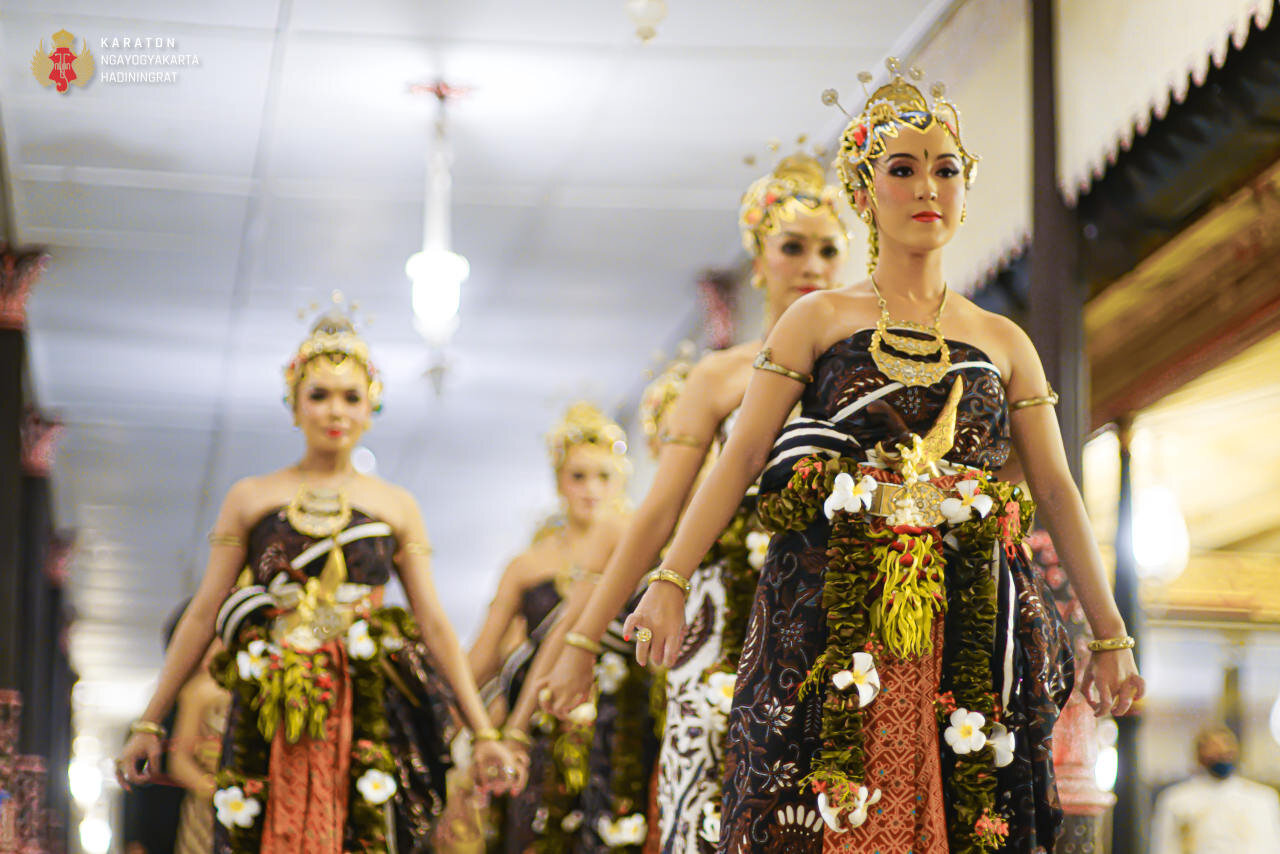
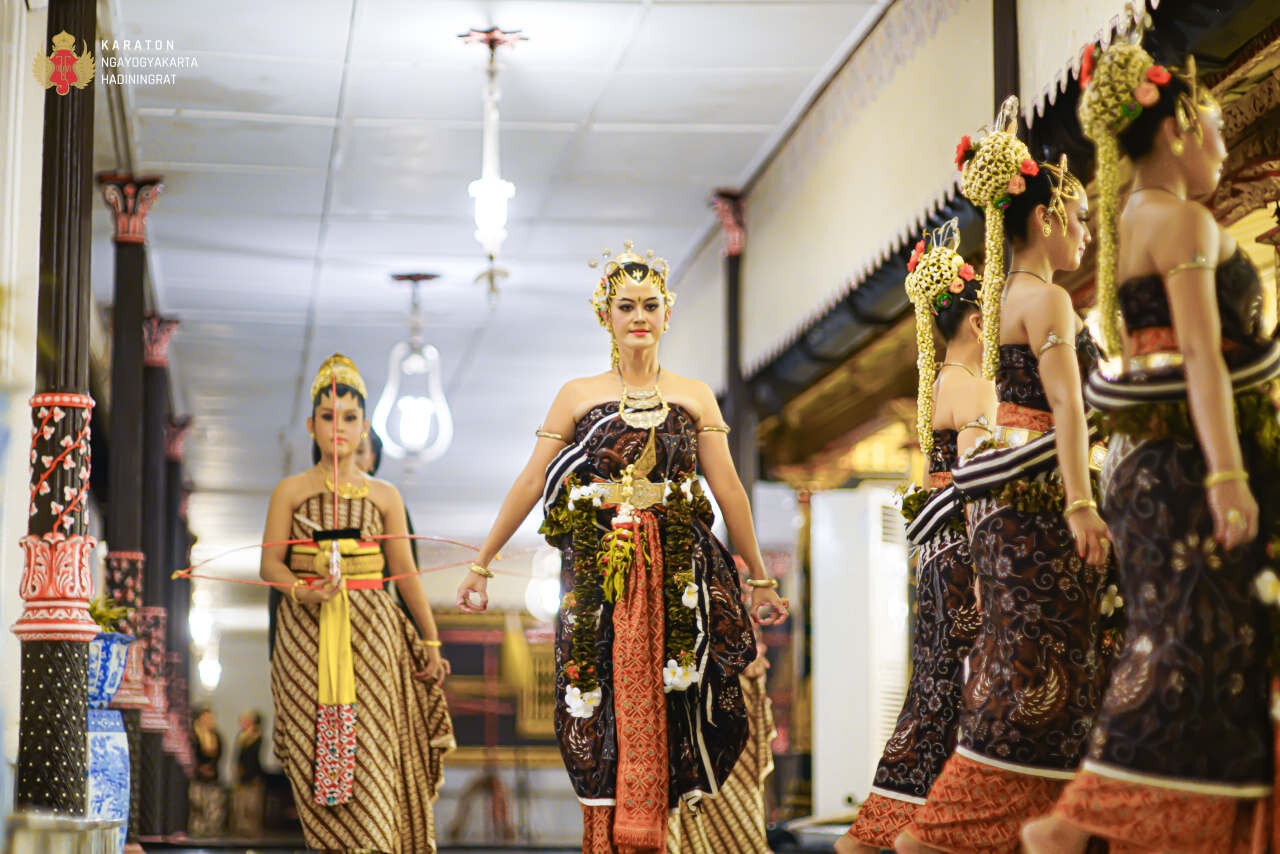
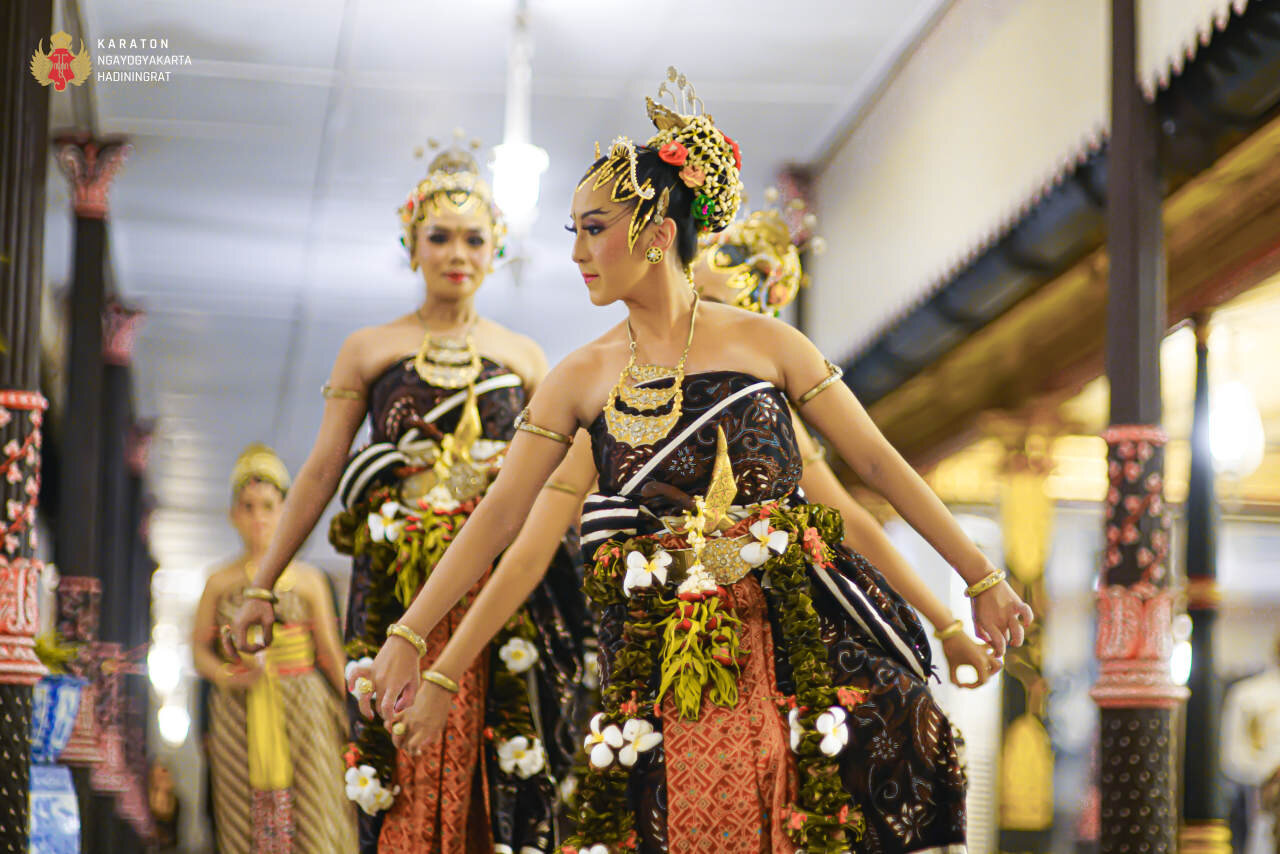
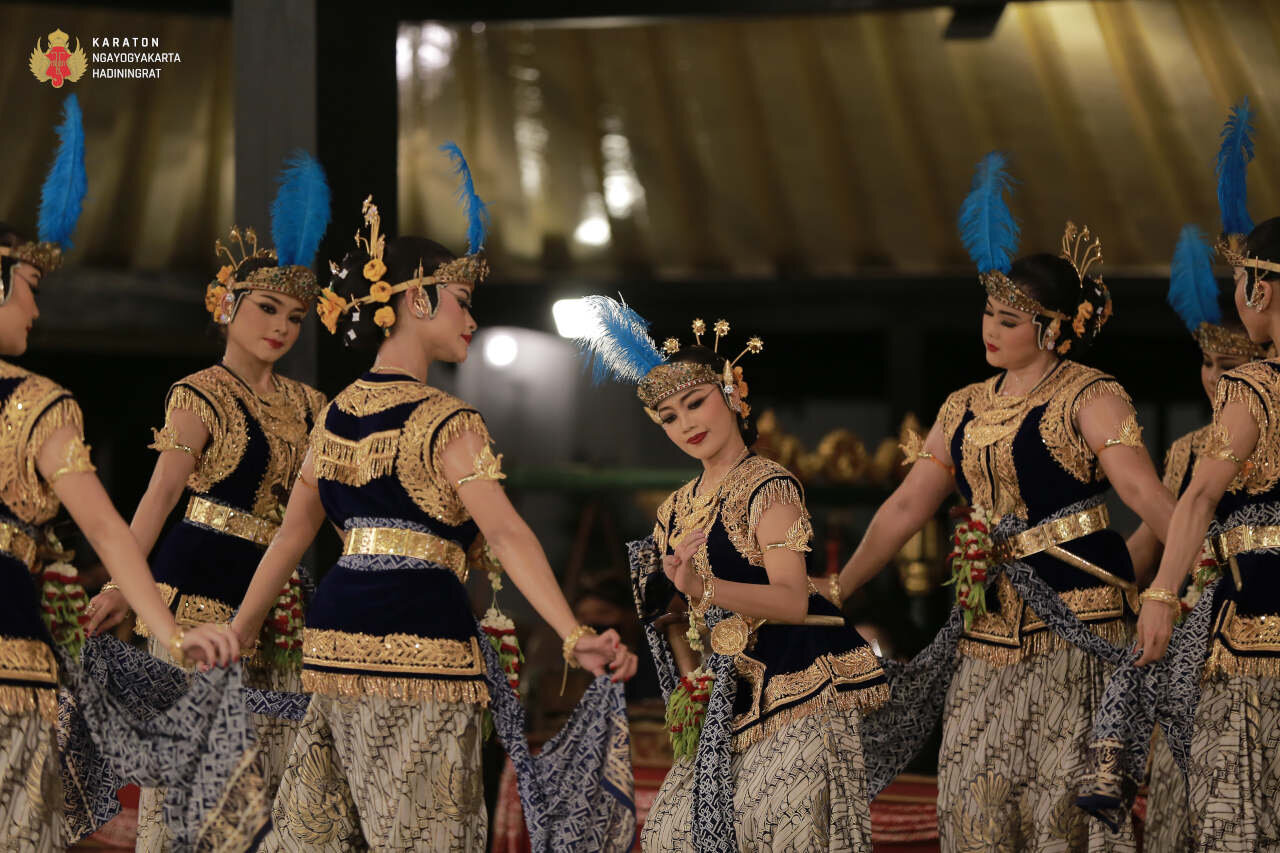
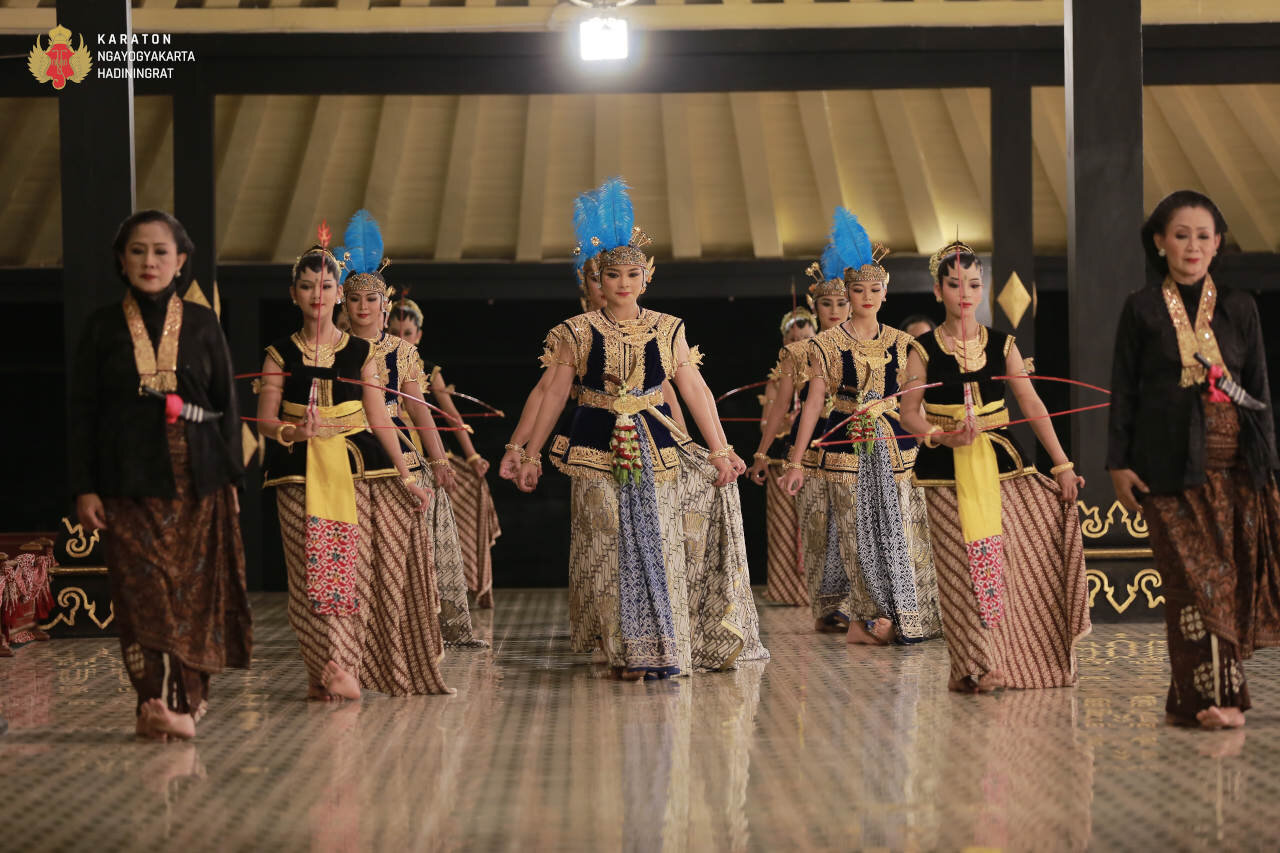
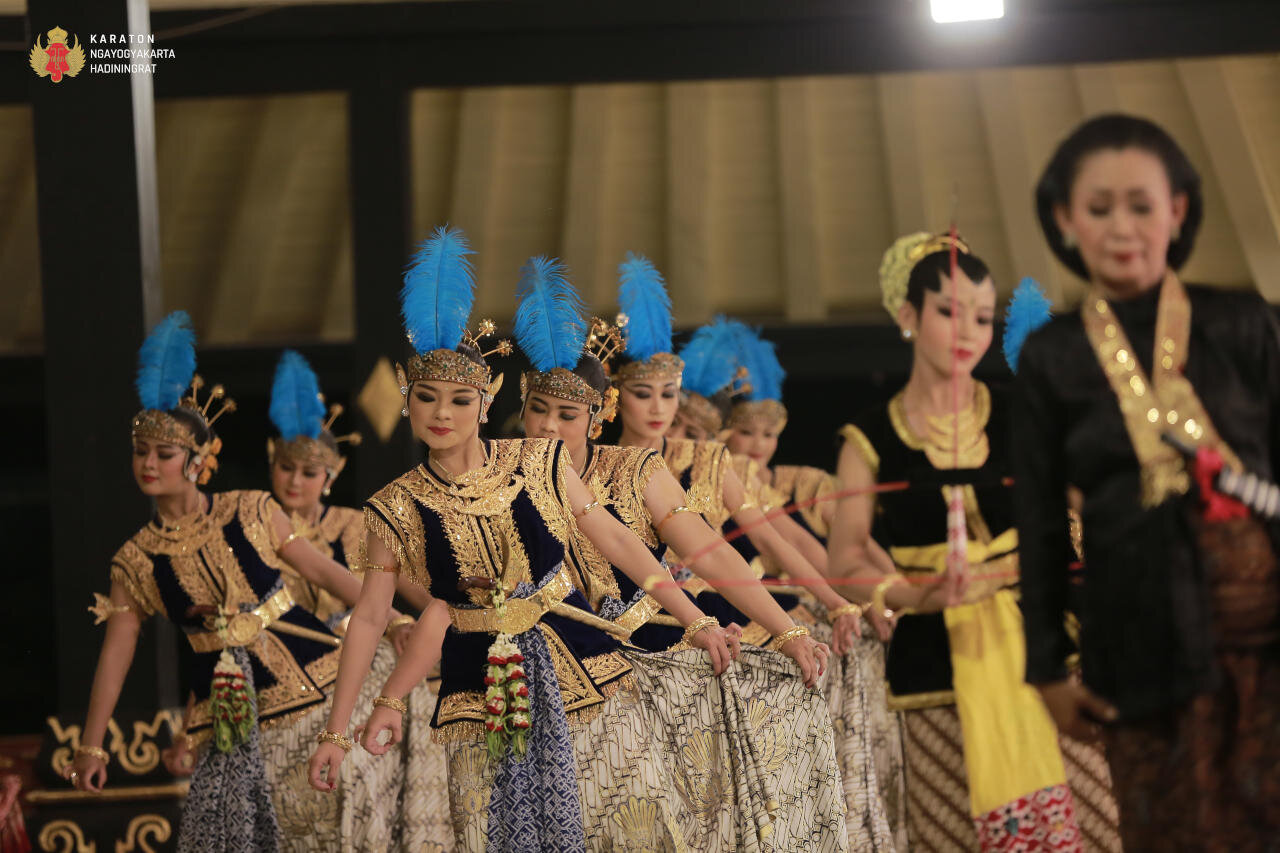
Characteristics, Arrangements, and Variety of Movements
Bedhaya Mintaraga was performed by nine female dancers accompanied by four dhudhuks who performed in the form of jemparing (arrows). The nine dancers in this bedhaya are related to the image of babahan air sanga which refers to the nine apertures in the human being and the anatomy of the body. In one scene, the nine Bedhaya Mintaraga dancers occupy positions as:
1. Endhel, symbol of the heart (will), played by Sumbrodo,
2. Batak, the symbol of the head (mind), played by Larasati,
3. The jangga or pengulu, the symbol of the neck, played by Raden Harjuna,
4. Dhadha, the symbol of the chest, is played by Srikandi,
5. Bunthil, the symbol of the buttocks, played by Lestari,
6. Apit Ngajeng, the symbol of the right hand, played by Palupi,
7. Apit Wingking, the symbol of the left hand, played by Manuhara,
8. Endhel Wedalan Ngajeng, symbol of the right foot, played by Drestanala,
9. Endhel Wedalan Wingking, symbol of the left foot, played by Supraba.
In the Bedhaya Mintaraga performance, there are nine scenes in one dance. The first to eighth scenes depict the figure of Raden Harjuna receiving heirloom weapons symbolizing the character of the knights of each wife. The ninth scene or jumenengan depicts Raden Harjuna reaching perfection as a true knight and being crowned the leader of the knights chosen by the Almighty to carry out the task of making this earth a blessing for all mankind. In this scene, Raden Harjuna, played by a jangga dancer, is at the front as the leader, while the other eight dancers play the wives in a row behind him.
In general, the main types of movements in Bedhaya Mintaraga include Sembahan Sila, Sembahan Jengkeng, Wipe Asta, Ngundhuh Sekar, Lampah Semang, Impang Ngewer Udhet, Nyathok Udhet, Kicat Mandhe Udhet, Tawing, Gudhawa Asta Minggah, Nggurdho, Jengkeng, and Bangomate.
Raden Harjuna is the depiction of ' Lelananging Jagat' as a chosen knight and 'Lancuring Jagat' as a commendable knight figure. Raden Harjuna's powerful wives and heirlooms are an illustration of the height and breadth of the knowledge he has mastered. The traits attached to this story can provide inspirational role models for all people.



